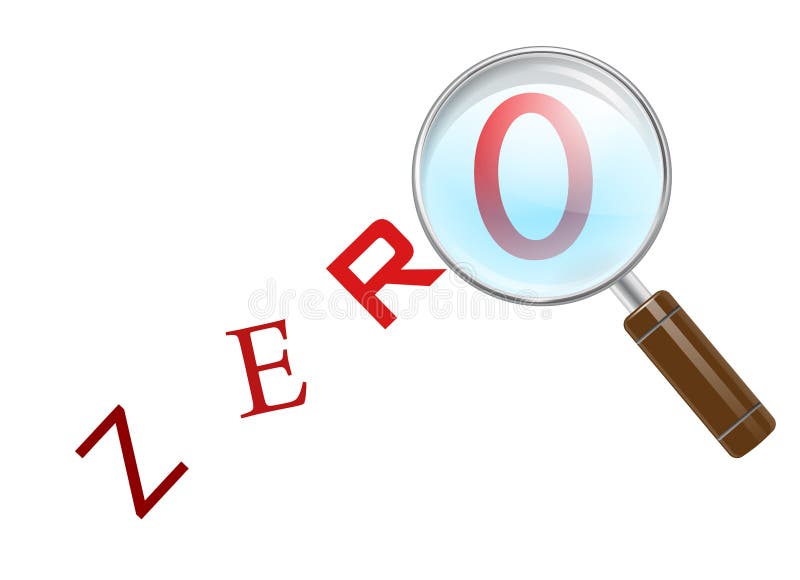We often hear people say that a person should not be a zero but a hero. But have we ever thought about the value that zero holds in our lives? The answer to this is certainly a no. This is because we attach no value to zero. However, in reality, the numerical zero is of utmost significance. Without discovery of zero, we would have not been able to reach to the higher degree of numbers. It is because every digit that comes at the end of one serial row end with 0.

For example – if we look at 11 to 20, the last digit in this serial number ends with 20, which has a zero in it on the right side. What if this zero did not exist? Would there be any value to it? The answer is a straight no. In this case, if there was no zero, the value of the digit would again drop down to being two which is a single digit.
Now, this was the case of zero being on the right side. You might ask that if zero is on the left side it makes no value. But wait! Have you ever thought of value of zero in decimals? Let us understand this with an example.
Thus, in this way, without zero, it is very difficult for us to lead the life. It is important for us to know the history behind the discovery of zero as knowing history of a thing attaches a sense of respect in the hearts of the people.
Story of Zero
Zero was used in ancient cultures, initially as a component of numerical systems, and then as a mathematical tool. The Sumerians are claimed to be the first to recognize the concept of naught. However, it was not until later that they come up with a symbol for zero. Similarly, the Maya established the concept of zero independently. The notion of nothingness eventually spread from the Middle East to India, China, and other places.

European civilizations were very late to the zero game, adopting zero into their cultures only after the mathematician Fibonacci brought the Indo-Arabic numeric system to Europe, following his trips in the Middle East and Africa. There, as elsewhere, zero proved to be a revolutionary notion. This led Middle Age and Renaissance philosophers to gain key insights into mathematics and the world.
Stages of Discovery of Zero
Babylonians
The discovery of zero appears to have occurred gradually rather than all at once. Scholars believe it started with the idea of using nothing as a placeholder when counting. Zeros were used in this manner by the Babylonians around 4,000 years ago. When counting, they split their numbers into columns in the same way that we do today, a notion known as positional notation. According to this, the number 115 has three columns of place values – ones, tens, and hundreds. The five is placed in the ones column, the one is placed in the tens column, and the last remaining one is placed in the hundreds column. To write 105, for example, we must first demonstrate that there is nothing in the tens column, which can be performed with a zero today.

Though the Babylonians employed a different number system than we do, they utilised positional notation to count in a similar manner. When the Babylonians sought to demonstrate that a column contained nothing, they simply left a void – nothing in the strictest sense. And for the first time, humans genuinely recognised the idea of nothing.
Over 1,000 years later, under the Seleucid Empire, the Babylonians appeared to have begun utilizing symbols shaped like wedges in place of gaps – some of the first pictorial depictions of zero. Nonetheless, the Babylonians do not appear to have expanded their notion of zero to include it as an actual number. A stone tablet with mathematical sums, for example, includes the computation “20 – 20,” but the solution is left blank — an undefined sum. To know more about their digit system, see here.
Mayas in discovery of zero
In a similar manner, the Maya applied zero. They required a method of inserting a zero in columns when writing dates. For instance, the date that they believed marked the beginning of the world’s present period was recorded in Maya notation as 13.0.0.0.0 and equated to 3114 B.C. Because the Maya had no interaction with Eurasia until long after these glyphs were recorded, it seems apparent that the Maya independently originated the notion of zero.
The Maya appear to have employed a variety of symbols representing zero, the most prevalent of which was a shell. The shell symbol appears to have been employed more broadly to represent the notion of nothing. The shell character that represents zero in their number system appears here in a more abstract meaning, indicating nothing. To look more into it, click here.
The Greeks
Zero spread slowly from Babylon to the rest of the globe. It was undoubtedly brought back by Alexander the Great. When he destroyed the Babylonian Empire in 331 B.C., zero appeared in Greece in the fourth century B.C. for the first time. When computing trigonometric calculations, Greek astronomers like Ptolemy used a hollow circle with a bar or line across the top. According to Robert Kaplan’s book ‘The Nothing That Is: A Natural History of Zero’, the Greeks presumably conceived zero as a punctuation point between actual numbers rather than a number in and of itself. To know more, check here.

The Indians – The Actual Discovery of Zero
We must travel to India to have a real understanding of zero’s location in the number line. There, scholars discovered the first concrete evidence of zero, known as “sunya” by the Indians. Being employed in mathematical computations, it became an integral component of mathematics as a distinct numerical object. A guy named Brahmagupta, a fundamental figure in Indian mathematics, was likely the first to make this logical jump. Brahmagupta outlined methods for completing calculations with zero in his mathematical book Brahmasphutasiddhanta, written in A.D. 628, which reflect the concept of zero that we understand today.
Conclusion
Historians and mathematicians continue to disagree on the real origins of zero. According to Amir Aczel, the number zero may have first appeared in Cambodia before it appeared in India. The mathematician spent years searching for the origins of zero, eventually ending himself in a shack near Angkor Wat. There, he claimed to have discovered the first actual zero on a tablet from the seventh century A.D. As he explained in his book Finding Zero: A Mathematician’s Odyssey to Uncover the Origins of Numbers, this would shift the first real zero from India to Cambodia, pushing the number’s chronology back by nearly 200 years.
Our modern-day zero didn’t arrive in the Western world until the 13th century, regardless of where it was discovered. Fibonacci, in Liber Abaci, introduced Europe to the Indo-Arabic zero at that time. The book, which was written in 1202, introduced the continent to our current number system, including the fundamental zero. The zero was used by mathematicians throughout the Renaissance period and beyond. Podium School offers many courses which teaches such history and improves the knowledge of the children. To know more about it, check here.
Share with your friends






